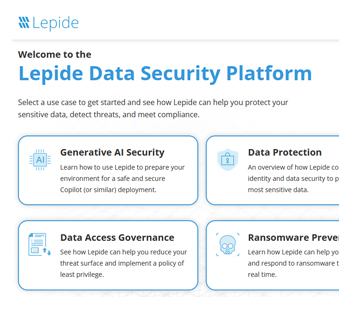Last Updated on February 21, 2025 by Deepanshu Sharma

In 2024, the average cost of a data breach hit a record high of $4.88 million, a 10% rise over 2023. Data theft is becoming a serious hazard to both individuals and organizations due to the rise in cyberattacks and data breaches. Rapid improvements in digital technology in recent years have contributed to the growth of data theft.
Data breaches can cause serious financial loss and damage reputations irreparably. Therefore, every organization’s IT and security teams should have a thorough understanding of data theft prevention and have the right procedures in place.
What is Data Theft?
Information theft, often known as data theft, is the act of obtaining private information or compromising privacy by stealing data from computers, servers, electronic devices, or corporate databases. Social security numbers, credit card numbers, bank account information, medical records, online passwords, and more might all be among the stolen data. It is when financial, private, or sensitive data is transferred or stored illegally.
Data theft is a severe privacy and security violation that can have disastrous repercussions, such as debilitating compliance penalties, reputational damage, and operational and financial losses. System administrators, office workers, enemies, or even hostile employees may steal company data from cloud apps, database servers, encrypted file servers, or personal devices. Cybercriminals are not the only ones who can do this.
Real-World Examples of Data Theft
Below is a list of a few famous real-world examples:
- Capital One Data Breach(2019): In 2019, Capital One acknowledged that a threat actor obtained files that contained the personally identifiable information of consumers and credit card applicants, including contact details, credit scores, and payment histories, in addition to more than 100,000 Social Security numbers and almost 80,000 associated bank account numbers.
- Marriott Data Breach (2018): Marriott International, the hospitality firm that manages one of the largest hotel chains globally, learned that its guest reservation system had been hijacked by cybercriminals in 2018. The personal information of hundreds of millions of consumers from different countries who had made reservations at Marriott’s Starwood properties over the previous few years was made public by this data leak. The incident caused Marriott to incur high recovery costs, legal repercussions, and brand harm.
- Equifax (2017): Equifax was the target of data theft in 2017. The personal information of 143 million clients was exposed in this incident. Additionally, credit card information belonging to about 209,000 individuals was compromised.
- Yahoo (2016): Yahoo disclosed that a 2014 attack had exposed 500 million users in September 2016. According to Yahoo, the data breach occurred as a result of an unauthorized person using cookie forgery to access user accounts without a password.
Common Techniques of Data Theft
Cybercriminals use a wide range of techniques to steal data. Below are some of the techniques through which data theft occurs:
- Social Engineering: Social engineering is the practice of coercing someone into disclosing private information or taking activities that jeopardize the security of data. Phishing is the type of social engineering that is most prevalent. Phishing is when an attacker poses as a reliable source to trick a victim into clicking on a link in an instant messaging app, text message, or email. Phishing attempts are a typical way for users to fall victim to data theft. Pretexting is a common technique employed in business email compromise, and it has nearly doubled since last year, which is partly responsible for the increase in social engineering incidents compared to the previous year.
- Insider Threat: There are situations when employees of a company have access to private client information. Data could be changed, stolen, or sold by a rogue or dissatisfied employee. But insider dangers aren’t just a problem for existing employees. Another source of insider threats is contractors, partners, or former workers who have access to private information about a company. Human involvement occurs in 74% of all breaches, either through error, misuse of privileges, or use of credentials that have been stolen.
- Weak Passwords: If an attacker uses a password that is simple to figure out or the same password for multiple accounts, they may be able to access data. Bad password practices, such writing passwords down on paper or sharing them with others, can also lead to data theft. Systems might become easy targets if weak passwords are used or if default login information is not changed. Credentials can also be stolen in several ways, allowing unauthorized access.
- Human Error: Malicious behaviour need not be the cause of data breaches. In other cases, they may be the consequence of human error. Sending private information to the wrong person is a common mistake. Examples include mistakenly sending an email to the wrong address, attaching the wrong document, or giving a physical file to someone who shouldn’t have access to it. On the other hand, human error could entail configuration errors, like when a worker leaves a database with private data online without enforcing password restrictions
- Physical Actions: Some data thefts are the consequence of physical acts rather than cybercrimes. These include the theft of documents or electronic equipment like phones, laptops, or storage devices. There is a greater chance of gadgets going missing or being stolen as remote working becomes more common. If you’re working in a public setting, like a coffee shop, someone might be watching your keyboard and screen and stealing data, including your login credentials. Another way that thieves steal data is by card-skimming, which involves inserting a device into card readers and ATMs to collect payment card information.
- System Vulnerabilities: Inadequately written software programs or poorly designed or implemented network systems provide weaknesses that hackers can take advantage of to steal information. Security flaws may also arise if your antivirus program is not updated.
Types of Data Theft
Below are some of the common examples of data that attackers will look to steal.
- Personal Health Information (PHI): This comprises health-related data such as insurance information and medical records. Attackers typically target PHI to commit insurance fraud or extortion.
- Personally Identifiable Information (PII): Information used to identify a person, such as name, address, social security number, or birthdate, is referred to as personally identifiable information (PII). PII is frequently targeted by attackers for financial fraud or identity theft.
- Login Credentials: Email addresses, social media accounts, online banking, and other internet services can all have usernames and passwords that can be used as entry points for additional theft or illegal activity.
- Financial Information: Credit card and debit card information, bank account information, and other financial data are examples of financial data. By using this information to access bank accounts or make unauthorized transactions, attackers can profit financially.
Consequences of Data Theft
Data theft has severe consequences that impact both individuals and organizations in unique ways. Below is the list of them.
- Reputational Damage: The clients are too aware of the value of their personal information and if the organizations cant demonstrate that they have taken all the necessary steps to protect their data, they will simply leave and go to a competitor that takes security more seriously. A study found that reputational damage is the most important risk to the businesses after a cyber attack, due to the lasting impact it can have on the company. Capital One’s data breach incurred a loss of 6% on the company’s share price showing the decline in the confidence for the rand.
- Legal Implications: As well as dealing with financial and reputational damage, you may have a lawsuit brought against you by an official body, or individuals who have had their data leaked. This is particularly apparent when companies fail to disclose the details of the data leak within the allotted time, and try to cover it up instead. It’s always best to be honest from the get-go with these things, and work with authorities to figure out what went wrong. The organizations that mishandle their data or have poor security practices can be subject to legal action from the affected customers.
- Sensitive Data Loss: The repercussions of a data breach that has led to the loss of private information can be disastrous. Every piece of information that can be used to directly or indirectly identify a person is considered its own data. Name, passwords, IP addresses, and credentials are all included in this. Additionally, sensitive personal information that could be used to identify a person is included, such as genetic or biometric data.
- Financial Loss: A data breach’s financial impact is without a doubt one of the most severe and immediate repercussions that an organization will have to cope with. Expenses may include paying impacted clients, establishing incident response procedures, looking into the hack, purchasing new security equipment, and paying legal bills, in addition to the huge penalties that can be assessed for failure to comply with the GDPR.
- Operational Downtime: After a data breach, business operations incur considerable disruptions. The aftermath necessitates containing the effects of the data breach, which leads to organizations carrying out in-depth investigations into the affected systems and the breach’s causes. Operations might have to be stopped entirely until investigators get all the information they require. The process of identifying vulnerabilities may take days or even weeks, contingent on the extent of the breach. Revenue and the capacity of an organization to recover may be significantly impacted by this.
- Loss of Potential Employees: Certain employees will lose their employment as a result of a data leak, particularly executives and tech workers. The stress of trying to mitigate the problem will cause others to depart. After learning that a company has experienced a data security breach, prospective employees may choose to apply elsewhere. People who work in IT and cybersecurity are frequently the least inclined to want to work for a company that has had a data breach. Unfortunately, jobs in IT and cybersecurity are also highly sought after.</li
How to Prevent Data Theft
There are several strategies to stop data leaks, and the first is to be proactive rather than reactive.
- Data Classification Strategy: Classifying data according to attributes like location, file type, and sensitivity is one of the greatest strategies to stop data theft. In order to provide the best level of protection where it is most needed, this approach will assist in prioritizing and applying security measures to the most important data. By offering a standardized procedure that recognizes and labels all sensitive data wherever it exists throughout an organization, including in networks, sharing platforms, endpoints, and cloud files, data classification provides this knowledge. In accordance with business and legal constraints, it functions by making it possible to create attributes for data that specify how to handle and secure each group. Because the data is readily available, businesses can implement safeguards that limit the risks of data exposure, minimize the data footprint, remove redundant data protection, and concentrate security resources on the most important tasks.
- Use Secure Passwords: Passwords are easily cracked by hackers, particularly if you don’t use strong ones. A strong password consists of a mix of capital and lowercase letters, symbols, and numbers. Keeping that in mind, you should make sure your password is memorable to reduce the likelihood that you will forget it. Don’t write your passwords on paper or on your phone, as this could make it simpler for someone to figure them out. A password manager is a useful tool for managing many passwords that you need to remember. Additionally, avoid using the same password across all of your accounts. Every account you have could be compromised by a single stolen password. Keep in mind that you should change your passwords often, roughly every six months.
- Establish Access Policies: It is necessary to design access control policies after having a thorough grasp of roles and data. Finding out what information each position may access, what actions (read, write, modify, and delete) they can take on it, and under what circumstances are all part of this process. Choose an access control system that best suits the demands of the company. Using the least privilege concept, create access controls according to user roles and data types. Customized policies enable more accurate security measures, lowering the possibility of both deliberate and inadvertent data thefts.
- Review Access Permissions: Employees in organizations frequently switch departments, positions, and responsibilities, making them dynamic entities. They also start new initiatives, partnerships, or projects. Organizations can quickly modify access rights to reflect these changes by conducting access reviews on a regular basis. This guarantees that users can access only the resources required for their present positions and duties. Your user privileges and permissions should be reviewed and audited on a regular basis to reduce internal threats and sensitive data misuse.
- Use Multi Factor Authentication(MFA): An additional layer of security is added by MFA, which often requires two different forms of identification before allowing access. This could be a combination of what they know (a password) and what they have (a token or mobile code). Multi-factor authentication (MFA) should always be enabled on platforms that allow it, especially when working with business accounts. Two different, unique forms of identity are needed for two-factor authentication in order to gain access. A password serves as the first factor, while the second is typically a text message with a code sent to your smartphone or biometrics that use your face, fingerprint, or retina. Make every effort to activate multi-factor authentication on your accounts.
- Be Cautious while Disclosing Information: Ensure that your data is only accessible to those who require it. Make an effort to restrict who has offline and online access to your data to those who are really necessary. Think about how and why someone might use your personal information, such as your date of birth, credit card number, passport number, Social Security number, work history, or credit status, if they request it. What security measures do they implement to ensure the confidentiality of your personal information? This implies that you should only give your phone number, passport number, social security number (SSN), and other personal information to authorized organizations that have security mechanisms in place to protect your data.
- Train Employees: Remembering that 80% of cyberattacks are the result of human error is always a good idea. Therefore, training your employees to handle phishing and other potential online risks is crucial. Therefore, we advise conducting frequent phishing efforts to assess staff members’ cybersecurity expertise. It is then simpler to modify training programs to fit particular needs based on the outcomes. Inform employees about best practices and hazards related to data security. Frequent training guarantees that employees are knowledgeable about possible risks and know how to properly adhere to security procedures.
- Monitor User Activity: The ability to centrally view user activity logs and access rights helps IT departments better control network activity and traffic. Critical information can also be further protected with sophisticated solutions like automatic incident response and access control. A lot of security incidents can be avoided with constant attention. To monitor users and network activities, use monitoring tools. Inconsistencies can be found through routine log reviews, enabling prompt interventions. By implementing and upholding these procedures, you may improve your security posture and have a strong defense against a range of online attacks.
How Lepide Helps Prevent Data Theft
The Lepide Data Security Platform will provide you with the necessary visibility to reduce the likelihood of a data breach. Our platform will give you complete visibility over what’s happening to sensitive data and the systems governing access to them. Lepide can help you improve your auditing and reporting capabilities, automate threat detection and response, and implement zero trust through permissions analysis and remediation. Set up a demo with one of our engineers or download a Free Trial to explore how Lepide can safeguard you from Data Theft.


 Group Policy Examples and Settings for Effective Administration
Group Policy Examples and Settings for Effective Administration 15 Most Common Types of Cyber Attack and How to Prevent Them
15 Most Common Types of Cyber Attack and How to Prevent Them Why AD Account Keeps Getting Locked Out Frequently and How to Resolve It
Why AD Account Keeps Getting Locked Out Frequently and How to Resolve It
